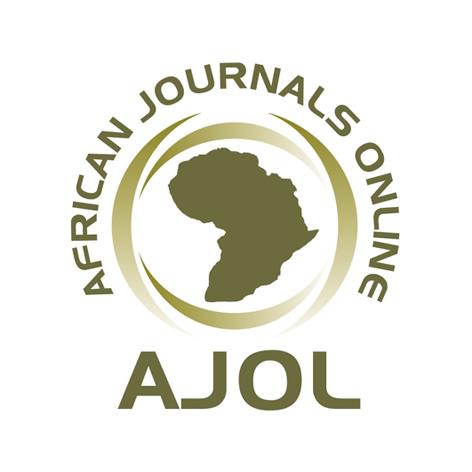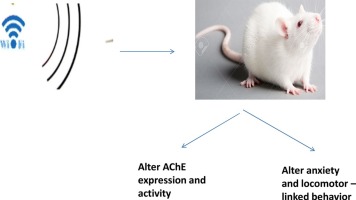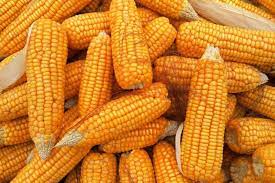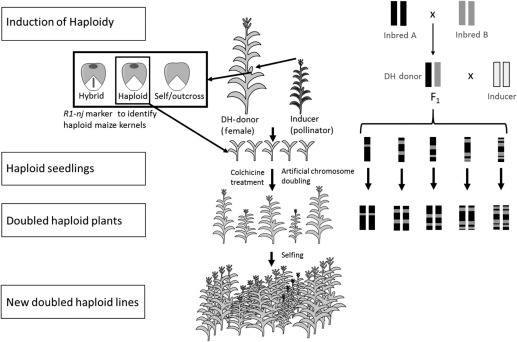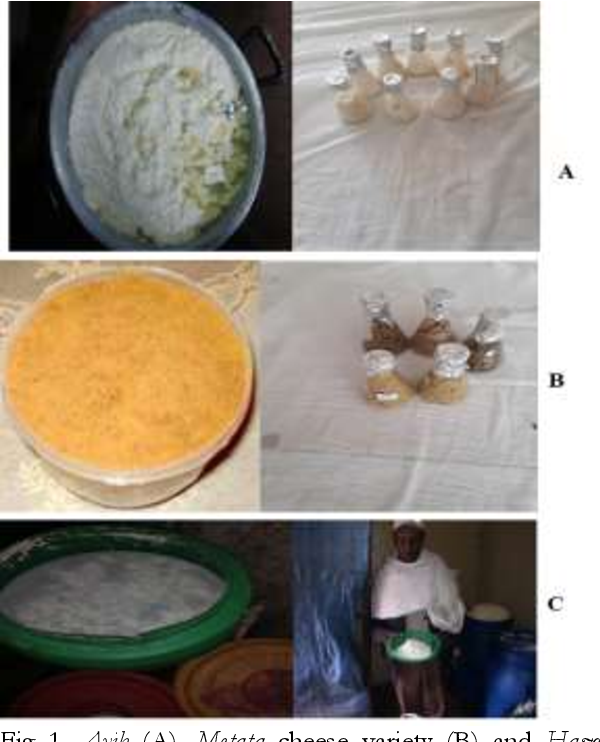Cytogenetic, Hematobiochemical, and Histopathological Assessment of Albino Rats (Rattus norvegicus) Fed on Gluten Extracts
Downloads
Background: Literature shows that most of the information on the toxicity of gluten is generated from survey and observational studies, resulting in inconsistent outcomes and a decrease in the acceptability of gluten-rich foods. To determine gluten's safety, an in-depth in vitro and in vivo toxicological examination is required. This enables scientists to come up with ameliorative strategies if
it turns out to have side effects, and consumers' trust can be restored.
Objectives: The objective of this study was to assess the toxicity of gluten extracts on albino rats (Rattus norvegicus).
Materials and Methods: twenty-four rats were randomly selected and divided into four groups, each comprising six rats. Group 1 (control) rats were fed on pellet feeds and groups 2, 3, and 4 were fed on daily dosages of 0.5, 1.0, and 1.5 g gluten extracts, respectively. The rats’ body weights and reactions were observed for 90 days before blood samples were collected for hematobiochemical and micronucleus tests. Histopathological examinations of the liver and kidneys were also performed.
Results: There was no difference (P > 0.05) in body weight, blood glucose level, or micronuclei between the control and treated rats. The lymphocytes, alkaline phosphatase, alanine transaminase, total protein, and calcium ions of the test rats were all significantly (P <0.05) altered but remained within the normal ranges. Other hematobiochemical parameters, including packed cell volume,
hemoglobin, white and red blood cells, aspartate transaminase, albumin, sodium ions, potassium ions, chloride ions, and urea, revealed no marked changes. The treated rats’ livers and kidneys showed no histopathological changes.
Conclusion: Gluten had no adverse effects on body weight, blood glucose level, genetic constitution, or histopathology in the treated rats. However, it altered hematobiochemical parameters, particularly the lymphocytes, alkaline phosphatase, alanine transaminase, total protein, and calcium ions. This suggests that prolonged consumption of gluten-containing diets can affect hematobiochemical
parameters.
Abdullah, S., Naguib, M., Salah El-Din, A.E., Alaa ElDin, H. and Sayed, A.E. 2024.
Hematobiochemical and histopathological
alterations in Nile Tilapia (Oreochromis niloticus)
exposed to ethidium bromide: The protective
role of Spirulina platensis. Aquaculture and
Fisheries, 9(1): 93‒103.
https://doi.org/10.1016/j.aaf.2022.01.006.
Antvorskov, J.C., Halldorsson, T.I., Josefsen, K.,
Svensson, J., Granström, C., Roep, B.O.,
Olesen, T.H., Hrolfsdottir, L., Buschard, K.
and Olsen, S.F. 2018. Association between
maternal gluten intake and type 1 diabetes in
offspring: National prospective cohort study
in Denmark. British Medical Journal, 362: 35–
https://doi.org/10.1136/bmj.k3547.
Barber, T.M., Hanson, P., Kabisch, S., Pfeiffer, A. and
Weickert, M.O. 2021. The low-carbohydrate
diet: Short-term metabolic efficacy versus
longer-term limitations. Nutrients, 13(4): 1187.
https://doi.org/10.3390/nu13041187.
Bathula, S.R., Ravishankar, B.V. and Gullaya, P.B.
Extraction of gluten from food
material. Medcrave Online Journal of Proteomics
and Bioinformatics, 7(3): 199–204.
http://dx.doi.org/10.15406/mojpb.2018.07.
Biesiekierski, J.R. 2017. What is gluten? Journal of
Gastroenterology and Hepatology, 1: 7881.
https://doi.org/10.12691/ijcd-6-2-2.
Dinani, O.P., Tyagi, P.K., Tyagi, J.S., Bhanja, S.K. and
Rokade, J.J. 2020. Effect of feeding rice gluten
meal with and without enzymes on
hematobiochemical profile of broiler
chickens. Veterinary World, 13(10): 2062–2069.
https://doi.org/10.14202/vetworld.2020.20
-2069.
FAO (Food and Agricutural Organization) 2019.
World food situation: FAO cereal supply and
demand brief. Available at
http://www.fao.org/worldfoodsituation/csd
b/en/. Accessed on 26/09/2021.
Freeman, H.J. 2018. Adverse effects of gluten-free
diets. International Journal of Celiac Disease, 6(3):
–73. http://dx.doi.org/10.12691/ijcd-6-3-
Freire, R.H., Fernandes, L.R., Silva, R.B., Coelho, B.S.,
de Araújo, L.P. and Ribeiro, L.S. 2016. Wheat
gluten intake increases weight gain and
adiposity associated with reduced
thermogenesis and energy expenditure in an
animal model of obesity. International Journal of
Obesity, 40(3): 479–486.
https://doi.org/10.1038/ijo.2015.204.
García Sagredo, J.M. 2011. Biomarcadores
citogenéticos como indicadores de la salud
[Cytogenetic biomarkers and health
status]. Anales de la Real Academia Nacional de
Medicina, 128(4): 705–721.
https://pubmed.ncbi.nlm.nih.gov/23350312
/.
Gasteyger, C., Larsen, T.M., Vercruysse, F. and Astrup,
A. 2008. Effect of a dietaryinduced weight
loss on liver enzymes in obese subjects.
American Journal of Clinical Nutrition, 87(5):
–1147.
https://doi.org/10.1093/ajcn/87.5.1141.
Giménez, E., Solano, C., Piñana, J.L., Poch, M., Mateo,
E., Albert, E., Hernández-Boluda, J.C., Amat,
P., Remigia, M.J., Pérez, A. and Navarro, D.
Failure of cytomegalovirus-specific
CD8+ T cell levels at viral DNAemia onset to
predict the eventual need for preemptive
antiviral therapy in allogeneic hematopoietic
stem cell transplant recipients. Journal of
Infectious Diseases, 219(9): 1510–1512.
https://doi.org/10.1093/infdis/jiy746.
Giraldo, P., Benavente, E. and Manzano-Agugliaro, F.
Worldwide research trends on wheat
and barley: A bibliometric comparative
analysis. Agronomy, 9: 352–370.
https://doi.org/10.3390/agronomy9070352.
Guidetti, C.S., Solerio, E., Scaglione N., Aimo G. and
Mengozzi, G. 2011. Duration of gluten
exposure in adult coeliac disease does not
correlate with the risk for autoimmune
disorders. Gut, 49: 502–505.
http://dx.doi.org/10.1136/gut.49.4.502.
Hamad, H. and Mangla, A. 2021. Lymphocytosis. Pp 1.
In: StatPearls [Internet]. Treasure island (FL):
StatPearls publishing; 2021. Available at
https://www.ncbi.nlm.nih.gov/books/NBK
/.
Hansen, D.V., Hanson, J.E. and Sheng, M. 2018.
Microglia in Alzheimer's disease. The Journal
of Cell Biology, 217(2): 459–472.
https://doi.org/10.1083/jcb.201709069.
Jönsson, T., Memon, A.A., Sundquist, K., Sundquist, J.,
Olsson, S., Nalla, A., Bauer, M. and Linse, S.
Digested wheat gluten inhibits binding
between leptin and its receptor. BMC
Biochemistry, 16: 148–159.
https://doi.org/10.1186/s12858-015-0032-y.
Karajibani, M., Montazerifar, F., Hosseini, R., Suni, F.,
Dashipour, A.R. and Fadaaeimokhtarkanlo,
M. 2021. The relationship between
malnutrition and liver enzymes in hospitalized
children in Zahedan: A case-control study.
Journal of Research in Medical Science, 23(1):
e102994.
http://dx.doi.org/10.5812/zjrms.102994.
Knoblaugh, S.E., Hohl, T.M. and La Perle, K. 2018.
pathology principles and practices for analysis
of animal models. ILAR Journal, 59(1): 40–50.
https://doi.org/10.1093/ilar/ilz001.
Kumar, P., Yadava, R.K., Gollen, B., Kumar, S.,
Verma, R.K. and Yadav, S. 2011. Nutritional
contents and medicinal properties of wheat: A
review. Life Sciences and Medicine Research, 22: 1–
http://astonjournals.com/manuscripts/Vol2
/LSMR-22_Vol2011.pdf.
Laszkowska, M., Mahadev, S., Sundström, J., Lebwohl,
B., Green, P., Michaelsson, K. and
Ludvigsson, J.F. 2018. Systematic review with
meta-analysis: The prevalence of coeliac
disease in patients with osteoporosis.
Alimentary Pharmacology and Therapeutics, 48(6):
–597.
https://doi.org/10.1111/apt.14911.
Lebwohl, B., Cao, Y., Zong, G., Hu, F.B., Green,
P.H.R., Neugut, A.I., Rimm, E.B., Sampson,
L., Dougherty, L.W., Giovannucci, E., Willett,
W.C., Sun, Q. and Chan, A.T. 2017. Long
term gluten consumption in adults without
celiac disease and risk of coronary heart
disease: prospective cohort study. British
Medical Journal, 357: 1892–1899.
https://doi.org/10.1136/bmj.j1892.
Lyddon, C. 2022. Focus on Nigeria. Available at
https://www.worldgrain.com/articles/17302-focus-on-nigeria.
Accessed on 15 May 2023.
Mellen, P.B, Walsh, T.F. and Herrington, D.M. 2008.
Whole grain intake and cardiovascular
disease: a meta-analysis. Nutrition, Metabolism
and Cardiovascular Disease, 18: 283–290. https://doi.org/10.1016/j.numecd.2006.12.0
Metwally, A. and Farahat, M. 2015. Nutritive value and
feeding of rice gluten meal in broiler chickens.
Research Opinion in Animal and Veterinary
Sciences, 5(11): 443–451.
http://www.roavs.com/.../443-451.pdf.
Navarro, R., Pérez, C.E., Mora-Rodríguez, R., de la
Cruz-Sánchez, E., González-Badillo, J.J.,
Sánchez-Medina, L. and Pallarés, J.G. 2017.
Time course of recovery following resistance
training leading or not to failure. European
Journal of Applied Physiology, 117(12): 2387–
https://doi.org/10.1007/s00421-017-
-7.
Neyrinck, A.M., Van Hée, V.F., Piront, N., De Backer,
F., Toussaint, O., Cani, P.D. and Delzenne,
N.M. 2012. Wheat-derived arabinoxylan
oligosaccharides with prebiotic effect increase
satietogenic gut peptides and reduce
metabolic endotoxemia in diet-induced obese
mice. Nutrition and Diabetes, 2(1): e28.
https://doi.org/10.1038/nutd.2011.24.
NHS (National Health Services) 2018. Total protein
test. Available at
https://www.nhs.uk/conditions/totalprotein-test/. Accessed on 02/10/2021.
NIFST (Nigerian Institute of Food Science and
Technology). 2023. On the growing concern
about gluten intolerance among Nigerians vs
the interest of local farmers and processors;
Don’t miss the point. Available at
on 15/05/2023.
Niland, B. and Cash, B.D. 2018. Health benefits and
adverse effects of a gluten-free diet in
nonceliac disease patients. Gastroenterology and
Hepatology, 14(2): 82–91.
https://www.ncbi.nlm.nih.gov/pmc/articles
/PMC5866307/.
Nishizawa, N., Togawa, T., Park, K.O., Sato, D.,
Miyakoshi, Y., Inagaki, K., Ohmori, N., Ito,
Y. and Nagasawa, T. 2009. Dietary Japanese
millet protein ameliorates plasma levels of
adiponectin, glucose, and lipids in type 2
diabetic mice. Bioscience, Biotechnology, and
Biochemistry, 73(2): 351–360.
https://doi.org/10.1271/bbb.80589.
OECD (Organisation for Economic Co-operation and
Development) (2007). OECD principles and
guidelines for access to research data.
Available at
https://www.oecd.org/sti/inno/38500813.p
df. Accessed on 02/07/2021.
OECD/FAO (Organisation for Economic Cooperation and Development/Food and
Agricultural Organization) 2019. OECDFAO agricultural outlook. Paris: OECD
agriculture statistics. Available at
https://www.oecd.org/agriculture/oecd-faoagricultural-outlook-2019/. Accessed on 2
May 2022.
Poole, N., Donovan, J. and Erenstein, O. 2020. Agrinutrition research: revisiting the contribution
of maize and wheat to human nutrition and
health. Food Policy, 10: 51–76.
https://doi.org/10.1016/j.foodpol.2020.101
Ray, C.S., Singh, B., Jena, I., Behera, S. and Ray, S. 2017.
Low alkaline phosphatase (ALP) in adult
population an indicator of zinc (Zn) and
magnesium (Mg) deficiency. Current Research in
Nutrition and Food Science, 5(3): 347–352.
https://dx.doi.org/10.12944/CRNFSJ.5.3.2
Rosell, C.M. 2012. Breadmaking. 2nd ed. Woodhead
publishing. Cambridge, UK. Pp. 687–710.
Sapone, A., Bai, J.C., Ciacci, C., Dolinsek, J., Green,
P.H.R. and Hadjivassiliou, M. 2012. Spectrum
of gluten-related disorders: consensus on new
nomenclature and classification. BMC
Medicine, 10: 13.
https://doi.org/10.1186/1741-7015-10-13.
Sfgate 2018. Additives that have gluten. Available at
https://healthyeating.sfgate.com/additivesgluten-8660.html. Accessed on 02/02/2021.
Shetty, R., Rai, M., Chandrashekar, R. and Kalal, B.S.
Diabetogenic effect of gluten in Wistar
albino rats: A preliminary preclinical
screening. Medicine and Pharmacy Reports, 93(1):
–52. https://doi.org/10.15386/mpr-1373.
Shewry, P.R. 2009. Wheat. Journal of Experimental Botany,
(6): 1537–1553.
https://doi.org/10.1093/jxb/erp058.
Shewry, P.R. and Hey, S.J. 2015. The contribution of
wheat to human diet and health. Food and
Energy Security, 4(3): 178–202.
https://doi.org/10.1002/fes3.64.
Silva, R.B., Rodrigues, E., Coelho, B.S., Andrade, K.,
Fonseca, L. and Fernandes-Braga, W. 2020.
Inconsistent effects of gluten on obesity: Is
there a role for the haptoglobin isoforms?
Clinical Nutrition, 40: 269–276.
https://doi.org/10.1016/j.clnesp.2020.09.00
Tanveer, M. and Ahmed, A. 2019. Non-celiac gluten
sensitivity: a systematic review. Journal of
College of Physicians and Surgeons Pakistan, 29(1):
–57.
https://doi.org/10.29271/jcpsp.2019.01.51.
Tojo, R., Suárez, A., Clemente, M.G., de los ReyesGavilán, C.G., Margolles, A., Gueimonde, M.
and Ruas-Madiedo, P. 2014. Intestinal
microbiota in health and disease: role of
bifidobacteria in gut homeostasis. World Journal of Gastroenterology, 20(41): 15163–15176. https://doi.org/10.3748/wjg.v20.i41.15163.
Viljamaa, M., Kaukinen, K., Huhtala, H., Kyrönpalo, S.,
Rasmussen, M. and Collin, P. 2005. Coeliac
disease, autoimmune diseases and gluten
exposure. Scandinavian Journal of
Gastroenterology, 40: 437–443.
http://dx.doi.org/10.1080/00365520510012
Wylie-Rosett, J., Aebersold, K., Conlon, B., Isasi, C.R.
and Ostrovsky, N.W. 2013. Health effects of
low-carbohydrate diets: where should new
research go? Current Diabetes Reports, 13(2):
–278. https://doi.org/10.1007/s11892-
-0357-5.
Yahaya, T. 2017. The seven risk factors of diabetes
mellitus. 1st edition. Editions Universitaires
Europeennes, Germany. Pp. 10.
Yahaya, T.O., Oladele, E.O., Salisu, T.F., Ayoola, Z.O.
and Ayodeji, S.O. 2020a. Toxicological
evaluation of selected gluten-rich diets on rats
(Rattus norvegicus). Nigerian Journal of Pure and
Applied Sciences, 33(1): 3547–3554.
http://dx.doi.org/10.19240/njpas.2019.B29.
Yahaya, T., Oladele, E., Obaroh, I., Bala, J., Jubril, A.
and Muhammad, A. 2020b. Effects of
telecommunication mast electromagnetic
radiation (EMR) on exposed rats (Rattus
norvegicus). East African Journal of Science, 14(2):
–140.
Yahaya, T., Shehu, K., Isah, H., Oladele, E. and
Shemishere, U. 2019. Toxicological
evaluation of the leaves of Guiera
senegalensis (J.F. Gme), Cassia occidentalis (Linn),
and Ziziphus mauritiana (Lam). Beni-Suef
Universal Journal of Basic Applied Sciences, 8: 14–
https://doi.org/10.1186/s43088-019-
-y.
Yeonjae, L., Junghyun, P. and Jeong-Sang, L. 2018.
Gluten-free diet: A review focusing on wise
food choices. EC Nutrition, 13(11): 676–681.
You, W., Rühli, F., Eppenberger, P., Galassi, F.M.,
Diao, P. and Henneberg, M. 2020. Gluten
consumption may contribute to worldwide
obesity prevalence. Anthropological Review, 83
(3): 327–348. https://doi.org/10.2478/anre2020-0023.
Zong, G., Lebwohl, B., Hu, F.B., Sampson, L.,
Dougherty, L.W., Willett, W.C., Chan, A.T.
and Sun, Q. 2018. Gluten intake and risk of
type 2 diabetes in three large prospective
cohort studies of US men and women. Diabetologia, 61(10): 2164–2173. https://doi.org/10.1007/s00125-018-4697-9.

This work is licensed under a Creative Commons Attribution-NoDerivatives 4.0 International License.
- I am authorized by my co-authors to enter into these arrangements.
- I warrant, on behalf of myself and my co-authors, that:
- the article is original, has not been formally published in any other peer-reviewed journal, is not under consideration by any other journal and does not infringe any existing copyright or any other third party rights;
- I am/we are the sole author(s) of the article and have full authority to enter into this agreement and in granting rights to Springer are not in breach of any other obligation;
- the article contains nothing that is unlawful, libellous, or which would, if published, constitute a breach of contract or of confidence or of commitment given to secrecy;
- I/we have taken due care to ensure the integrity of the article. To my/our - and currently accepted scientific - knowledge all statements contained in it purporting to be facts are true and any formula or instruction contained in the article will not, if followed accurately, cause any injury, illness or damage to the user.
- I, and all co-authors, agree that the article, if editorially accepted for publication, shall be licensed under the Creative Commons Attribution License 4.0. If the law requires that the article be published in the public domain, I/we will notify Springer at the time of submission, and in such cases the article shall be released under the Creative Commons 1.0 Public Domain Dedication waiver. For the avoidance of doubt it is stated that sections 1 and 2 of this license agreement shall apply and prevail regardless of whether the article is published under Creative Commons Attribution License 4.0 or the Creative Commons 1.0 Public Domain Dedication waiver.
- I, and all co-authors, agree that, if the article is editorially accepted for publication in Haramaya Journals, data included in the article shall be made available under the Creative Commons 1.0 Public Domain Dedication waiver, unless otherwise stated. For the avoidance of doubt it is stated that sections 1, 2, and 3 of this license agreement shall apply and prevail.





